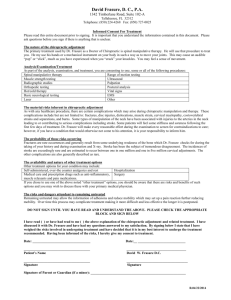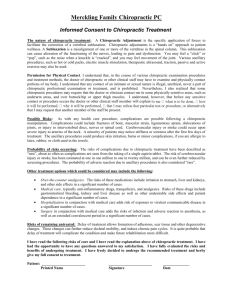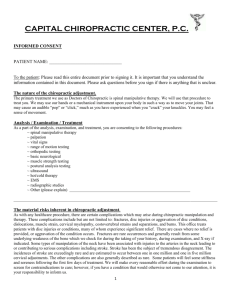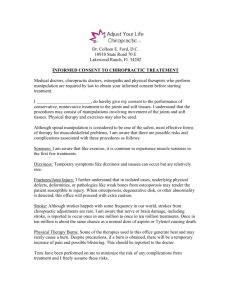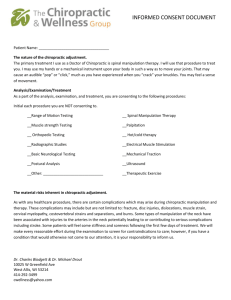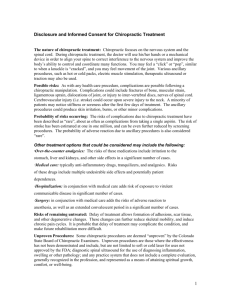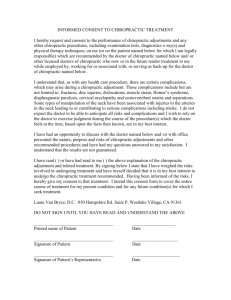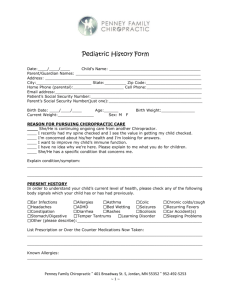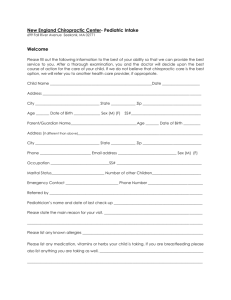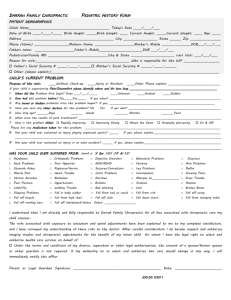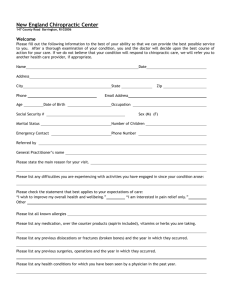Informed Consent to Chiropractic Treatment
advertisement
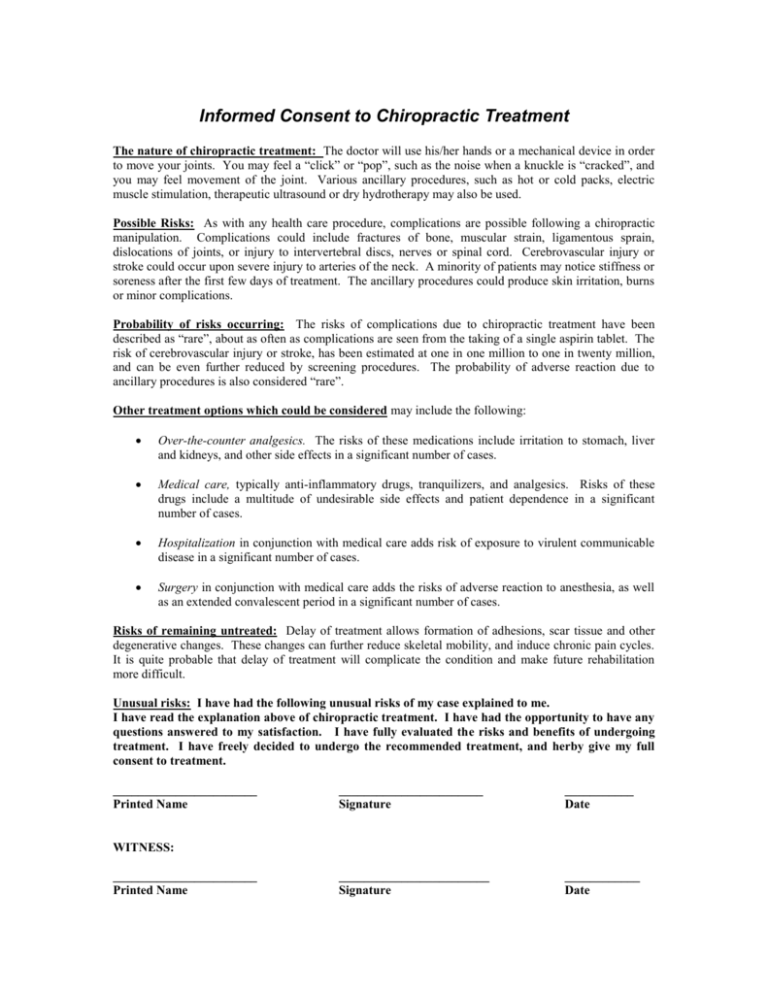
Informed Consent to Chiropractic Treatment The nature of chiropractic treatment: The doctor will use his/her hands or a mechanical device in order to move your joints. You may feel a “click” or “pop”, such as the noise when a knuckle is “cracked”, and you may feel movement of the joint. Various ancillary procedures, such as hot or cold packs, electric muscle stimulation, therapeutic ultrasound or dry hydrotherapy may also be used. Possible Risks: As with any health care procedure, complications are possible following a chiropractic manipulation. Complications could include fractures of bone, muscular strain, ligamentous sprain, dislocations of joints, or injury to intervertebral discs, nerves or spinal cord. Cerebrovascular injury or stroke could occur upon severe injury to arteries of the neck. A minority of patients may notice stiffness or soreness after the first few days of treatment. The ancillary procedures could produce skin irritation, burns or minor complications. Probability of risks occurring: The risks of complications due to chiropractic treatment have been described as “rare”, about as often as complications are seen from the taking of a single aspirin tablet. The risk of cerebrovascular injury or stroke, has been estimated at one in one million to one in twenty million, and can be even further reduced by screening procedures. The probability of adverse reaction due to ancillary procedures is also considered “rare”. Other treatment options which could be considered may include the following: Over-the-counter analgesics. The risks of these medications include irritation to stomach, liver and kidneys, and other side effects in a significant number of cases. Medical care, typically anti-inflammatory drugs, tranquilizers, and analgesics. Risks of these drugs include a multitude of undesirable side effects and patient dependence in a significant number of cases. Hospitalization in conjunction with medical care adds risk of exposure to virulent communicable disease in a significant number of cases. Surgery in conjunction with medical care adds the risks of adverse reaction to anesthesia, as well as an extended convalescent period in a significant number of cases. Risks of remaining untreated: Delay of treatment allows formation of adhesions, scar tissue and other degenerative changes. These changes can further reduce skeletal mobility, and induce chronic pain cycles. It is quite probable that delay of treatment will complicate the condition and make future rehabilitation more difficult. Unusual risks: I have had the following unusual risks of my case explained to me. I have read the explanation above of chiropractic treatment. I have had the opportunity to have any questions answered to my satisfaction. I have fully evaluated the risks and benefits of undergoing treatment. I have freely decided to undergo the recommended treatment, and herby give my full consent to treatment. _______________________ Printed Name _______________________ Signature ___________ Date ________________________ Signature ____________ Date WITNESS: _______________________ Printed Name
